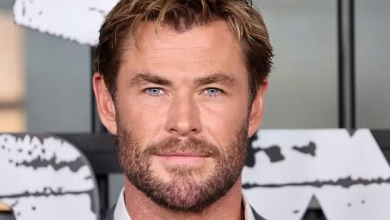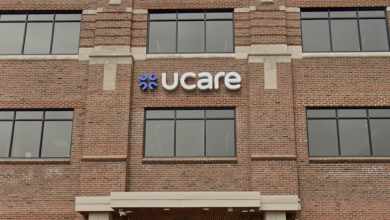Jordan Peterson’s Daughter Breaks Down in Emotional Health Update — Fans Rally Behind Her

When a public figure’s health turns from a rumor mill into a raw human crisis, the way their loved ones communicate can deeply affect how the public perceives and responds. Recently, Mikhaila Peterson, daughter of Canadian psychologist and author Jordan B. Peterson, released a deeply emotional health update that laid bare the severity of her father’s condition—and unleashed a wave of sympathy, prayers, and public encouragement across social media.
A Sudden Turn: Jordan Peterson’s Health Crisis Comes Into View
Jordan Peterson has long been a figure of broad public interest. Over the years he’s faced health struggles, controversies, and intermittent breaks from public life. Even as he remained influential in intellectual and cultural spheres, observers have periodically noticed signs of physical and neurological strain.
But until recently, much of his health trajectory was private or speculative. The latest update from his daughter crystallized a more urgent narrative: that Peterson had nearly crossed into a life-threatening zone.
What Mikhaila Peterson Revealed
In her tearful address and statement, Mikhaila Peterson disclosed several critical facts about her father’s health:
- ICU, Pneumonia & Sepsis
Jordan Peterson spent nearly a month in an intensive care unit after developing pneumonia and sepsis. The conditions were serious enough that Mikhaila described the experience as a “near-death” episode for him. - Neurological Complications
During his hospital stay, he was diagnosed with critical illness polyneuropathy, a condition often seen in severely ill ICU patients, involving nerve damage and muscular weakness. Mikhaila also noted the possibility of critical illness myopathy, another serious muscular condition. - Underlying Immune Dysfunction & Mold Exposure
Beyond the acute infection, she asserted that Peterson has had chronic immune system issues tied to Chronic Inflammatory Response Syndrome (CIRS). She attributed this to years of mold exposure, possibly exacerbated by his recent work cleaning out his late father’s basement. Mikhaila framed the mold exposure as triggering a flare in his condition. - Medication & Treatment Limitations
An especially difficult factor, as she stressed, is that Peterson reportedly cannot tolerate many medications without severe paradoxical reactions. This, she said, complicates standard treatment protocols and narrows available options. - She closed with a commitment to keep the public and supporters apprised: “I’ll keep people updated. He has a team of people, including myself, continuing his mission.”
The Emotional Delivery: Why This Update Struck a Chord
It’s one thing to issue a press release; it’s another to deliver emotion live. The effectiveness of Mikhaila’s update rested not just on content but on how she chose to communicate it.
Vulnerability in Public
By allowing tears, pauses, and visible strain, she broke from the usual media façade of controlled composure. That vulnerability humanized the situation—she was no longer just a mouthpiece or PR manager, but a daughter in distress.
Such an emotional tone sends a dual message: “This is serious,” and “You have my trust in seeing this unfiltered.” The risk is always that some may perceive dramatic performance or exploitation, but the authenticity of her grief seemed to cut through those criticisms for many viewers.
The Weight of Context
Her message did not exist in a vacuum. Over previous years, Peterson had canceled events, postponed projects, and gradually shrunk his public presence, sometimes citing mysterious health constraints. Observers had been wondering, speculating. Her announcement served as a pivot from speculation to narrative clarity (though still with uncertainty).
Also, because Mikhaila is not a random spokesperson—she is intimately involved in her father’s public ventures—her voice carries credibility for many supporters. Some already follow her work and health journey, making her connection to the narrative stronger.
Strategic Transparency (With Limits)
While she disclosed many details, she also left space for mystery. She admitted uncertainty about some diagnoses, acknowledged gaps, and did not promise swift recovery. This kind of balanced disclosure helps maintain trust—saying, “This is what we know; this is what we don’t know.” It signals honesty, not overreach.
The Public Response: Empathy, Debate, and Mobilization
In the hours and days following her update, reactions poured in—some universal, some divided, all illuminating how audiences engage when a public figure becomes vulnerable.
Outpouring of Support
A flood of fans, followers, and public figures expressed compassion. Among them:
- Conservative commentators and media personalities offered prayers, encouragement, and emotional solidarity.
- Many social-media users shared personal testimonies of how Peterson’s work had impacted them, vowing support in return.
- Some organized communal prayer chains or requested public prayer on behalf of the Peterson family.
- Others expressed admiration for Mikhaila’s courage in speaking so openly.
In this way, the Peterson “brand” also serves as a community—followers feel personally invested in the family’s outcome.
Skepticism, Questioning & Caution
Not all responses were unequivocally supportive. Some voices raised critical or questioning points:
- Medical legitimacy of CIRS: Chronic Inflammatory Response Syndrome remains controversial in mainstream medicine. Some doctors and observers pressed for peer-reviewed evidence, proper diagnostic clarity, and caution around claims of mold causing systemic illnesses.
- Over-spiritual framing: A few criticized the invocation of spiritual attack—wondering whether it might discourage more material medical interventions or border on conflating faith and disease.
- Narrative control & media spectacle: Some skeptics warned about the dangers of “crisis messaging”—how public health struggles can be shaped into narratives for influence, sympathy, or even fundraising (though no major claim has surfaced in that vein this time).
- Pressure and expectations: Others cautioned that the public could become impatient, expecting weekly “miracle updates” or demanding transparency beyond what is reasonable in medical privacy.
Balancing Empathy and Scrutiny
This dynamic—support plus skepticism—is typical in high-stakes public health disclosures. Genuine empathy often coexists with critical inquiry. A challenge for Mikhaila and her family will be to maintain boundaries and narrative control while preserving the trust of a concerned public.
The Wider Context: Peterson’s Health History & The Challenges of Chronic Illness
To make sense of the latest update, it helps to see how this fits into Peterson’s broader health narrative, and to understand how chronic, enigmatic conditions often resist straightforward storytelling.
Past Medical Struggles & Silence
Jordan Peterson’s health issues are not new to public watchers. In 2020, he had a highly publicized struggle with benzodiazepine dependence and sought treatment abroad. Over the years, he also delayed or canceled appearances, citing lingering physical or neurological difficulties. Some of these had been explained only partially or obliquely—and the community was left filling in blanks.
Thus, the sudden intensity of this crisis echoes earlier patterns, but now elevated to life-threatening levels. Some long-time observers have expressed a bittersweet sense of “finally, full disclosure” mixed with worry.
The Problem of Diagnostic Uncertainty & Treatment Barriers
Chronic illnesses—especially those involving immune, neurological, or environmental components—are notoriously difficult to pin down. Some features:
- Symptoms often overlap many systems (fatigue, headache, brain fog, pain, sensitivities).
- Standard medical protocols may not address the root cause (if the root cause is unknown, contested, or multi-factorial).
- Some patients do not respond to conventional treatments—or respond paradoxically.
- Public narratives often demand a linear, triumphant arc (disease → diagnosis → cure) when reality is messier (relapse, plateau, trial and error).
The Role of Environment & Lifestyle
The mold exposure narrative is central to her explanation. If mold or indoor air toxins are indeed major contributors, that introduces environmental remediation, detoxification protocols, and control over living/working conditions as critical factors. But that also raises complexity:
- How much is exposure, how much is predisposition?
- Which remediation strategies are safe and effective?
- How do you monitor progress when many variables (air quality, diet, detox pathways) interact?
Those are not trivial questions, and even well-resourced patients often face uncertainty, financial burdens, and lack of consensus in the medical community.
What This Moment Teaches Us
The unfolding Peterson health crisis reflects deeper themes about vulnerability, public life, and how society holds space for suffering—even in fame.
Public Figures, Private Pain
Just because someone is public does not mean they are impervious. The demand for consistency, visibility, and performance conflicts directly with the unpredictability of illness. When a figure like Peterson slips into crisis, there is both a risk of dehumanizing narratives and an opportunity to reconnect with shared fragility—and the empathy of audiences.
The Power (and Risk) of Transparency
Mikhaila’s decision to be visibly emotional is powerful. It invites solidarity, dispels rumors, and reframes her family as people under duress—not icons above suffering. But transparency also leaves her open to scrutiny, misinterpretation, and emotional exhaustion from constant status updates.
Community as Care
Supporters rallying behind the Peterson family become more than fans—they become a network of emotional care. That can be sustaining, but it also can carry expectations. The family must balance gratitude with boundaries, choosing how much to share and when to pull back.
The Gap Between Narrative & Biology
Health crises resist tidy narratives. They don’t always conclude with triumphant recovery or neatly explained causes. Public consumers of health stories—journalists, fans, critics—often push for resolution or clarity, but real bodies don’t always comply. Recognizing that ambiguity is an important step to more humane coverage.
What Lies Ahead: Recovery, Communication & Caution
As of now, the Peterson family faces a delicate path forward.
- Medical progress will likely be nonlinear. There may be days of strength and days of setback. Patience is essential.
- Updates will need a cadence that balances honesty with sustainability. Audiences may hunger for milestones, but the family must manage their own pace of disclosure.
- Medical validation vs. skepticism. As Mikhaila’s mold / CIRS framework draws attention, the family may face pressures from medical professionals, critics, or supporters to prove their model. How they navigate that tension will influence both their narrative control and public trust.
- Reentry into public work. At some point, Peterson may wish to resume lectures, writing, or media appearances. That return will carry additional scrutiny, expectation, and health risk.
- Emotional and mental self-care. Caring for someone with serious illness is exhausting. Mikhaila and the family must guard against burnout, secondary trauma, and emotional collapse.
Conclusion:
When Mikhaila Peterson broke down in her health update, she did more than relay facts. She opened a window into a family in crisis, not just a public brand. In doing so, she invited the global Peterson community to step into empathy rather than distance.
What follows will likely be difficult, unpredictable, and deeply personal—far beyond the neat arcs of news coverage. But if the current moment has taught anything, it’s this: even those we see on stages, in books, on video—they hurt, they fear, they hope.




